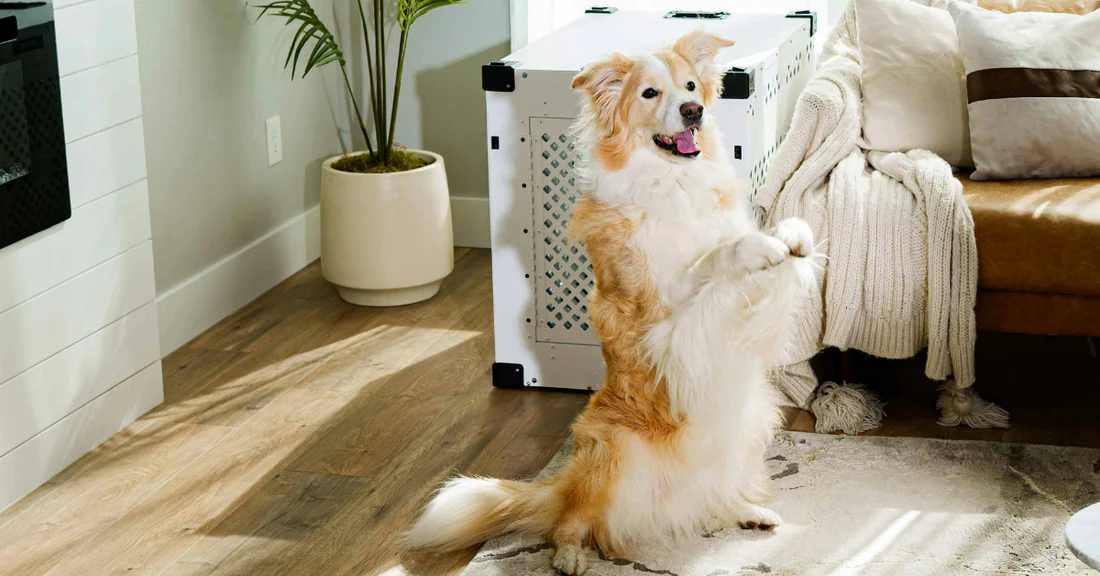Crate training is one of the most effective ways to create a secure, comfortable space for your dog while promoting good behavior and house training. Whether you have a new puppy, a rescue dog, or an older pet, you can successfully crate train them with patience and the right techniques. In this guide, we’ll walk you through the steps to crate train your dog at any age while also helping you choose the right dog crate, whether you need a large dog crate for your big friend, and if it is bigger than we thought :) extra large dog crate, or even a dog travel crate for on-the-go adventures.
Why Crate Training is Important
Crate training offers multiple benefits for both dogs and their owners. It provides a safe space for your pet, helps with housebreaking, prevents destructive behavior, and makes travel easier. Many dogs instinctively seek out enclosed spaces, making crates a natural fit for their comfort and security.
Choosing the Right Dog Crate
Before you begin crate training, selecting the right crate for your dog is significantly important. There are different types of dog crates available and each ones serves for specific needs
1. Wire Dog Crates
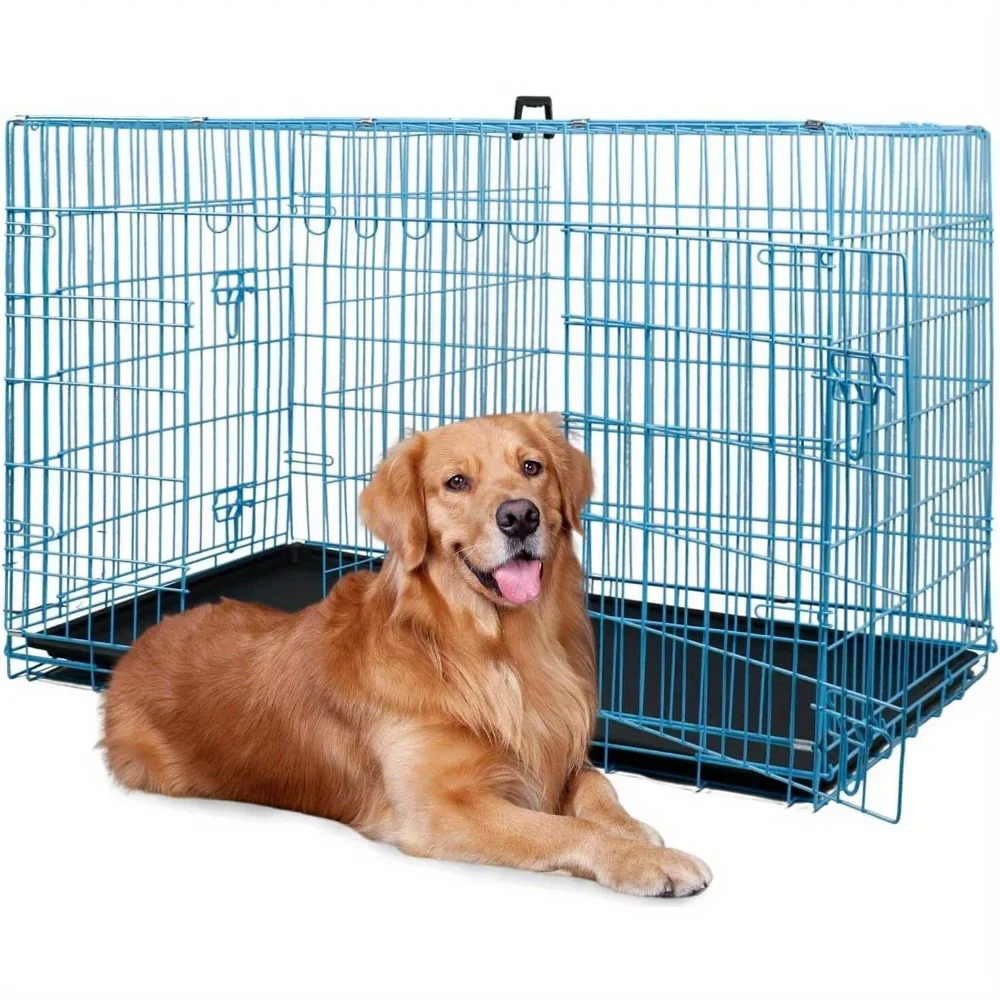
- Ideal for home use, offering good ventilation and visibility.
- Available in various sizes, including extra-large dog crates.
- Some come with dividers for growing puppies.
2. Plastic Dog Crates
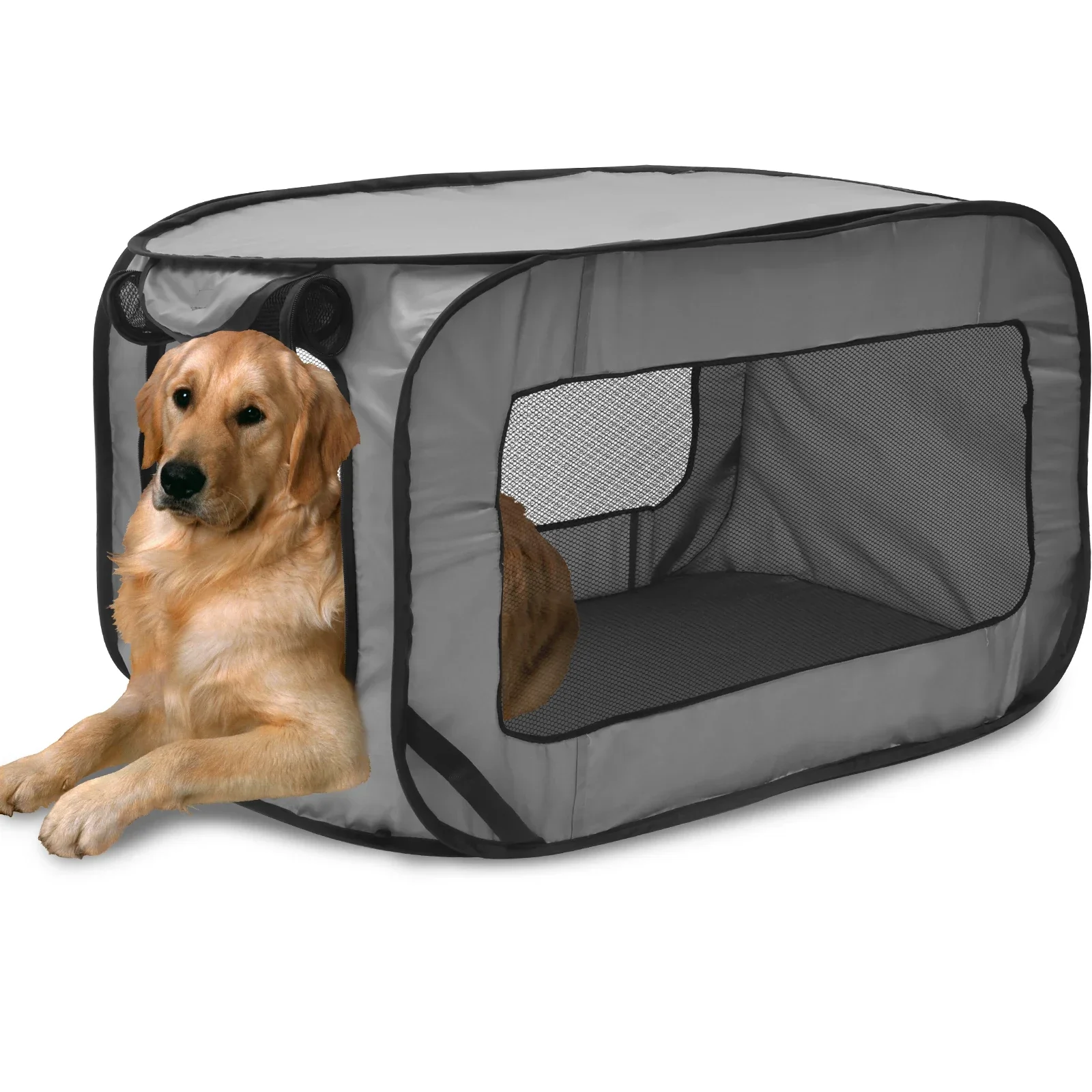
- More enclosed, giving a cozy den-like feel.
- Ideal for travel, including air travel.
3. Heavy-Duty Dog Crates
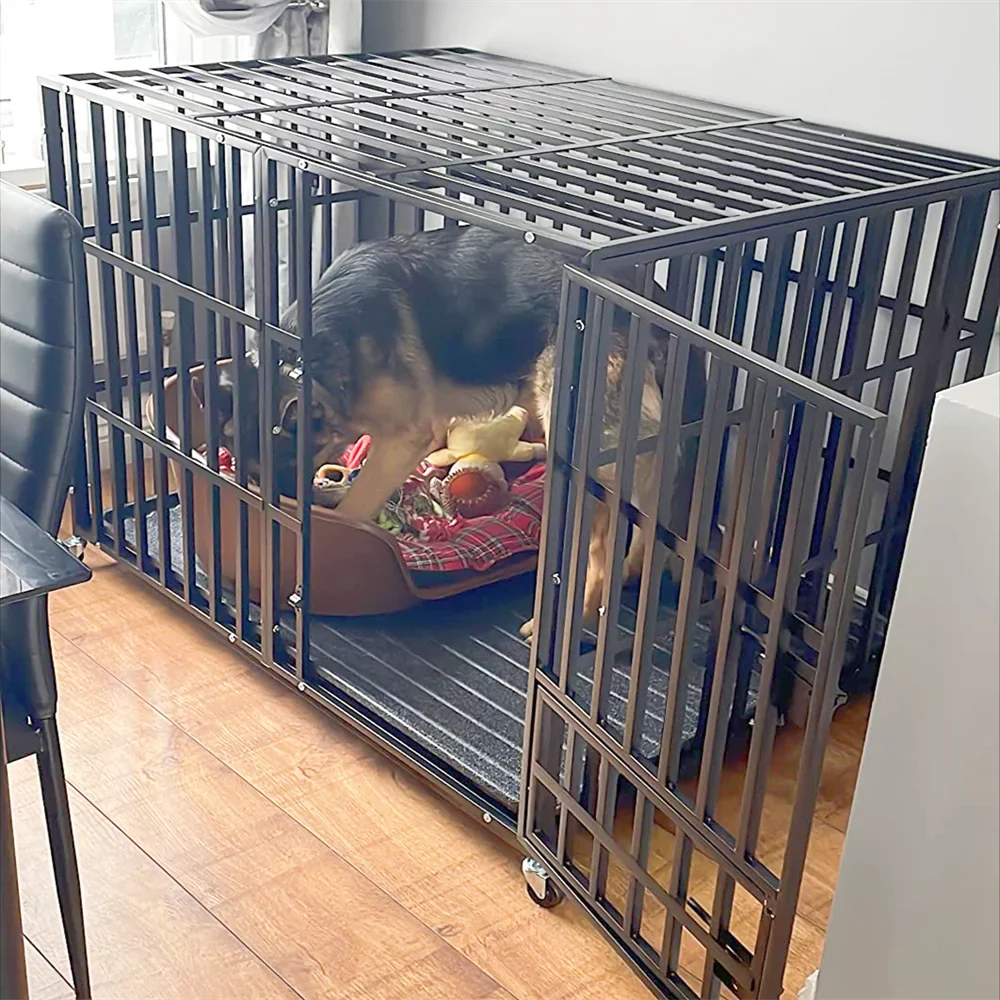
- Designed for high-energy or escape-prone dogs.
- Made from reinforced steel or aluminum.
4. Dog Crate Furniture
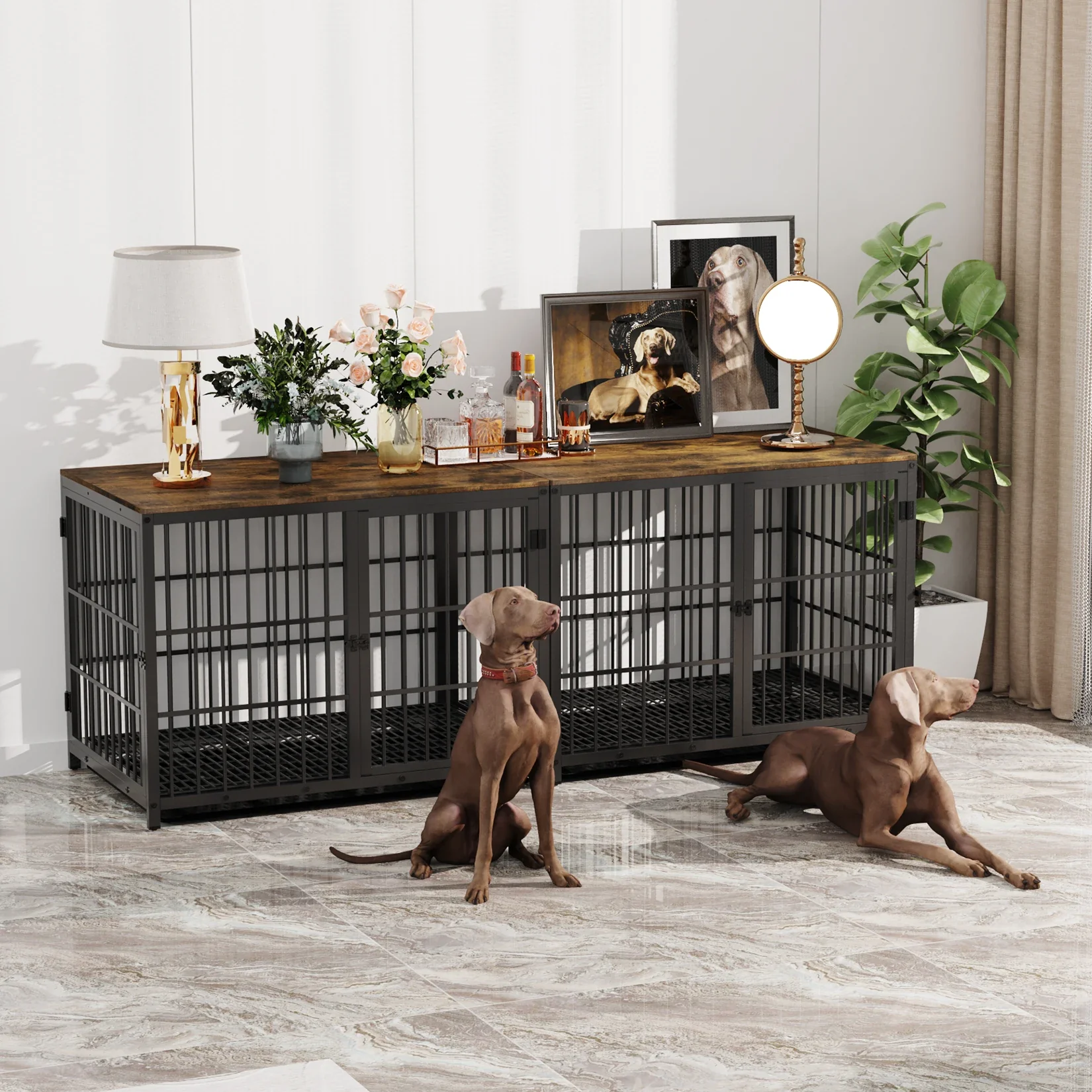
- Stylish, doubles as home furniture.
- Great for those who want practicality and design.
5. Outdoor Dog Crates
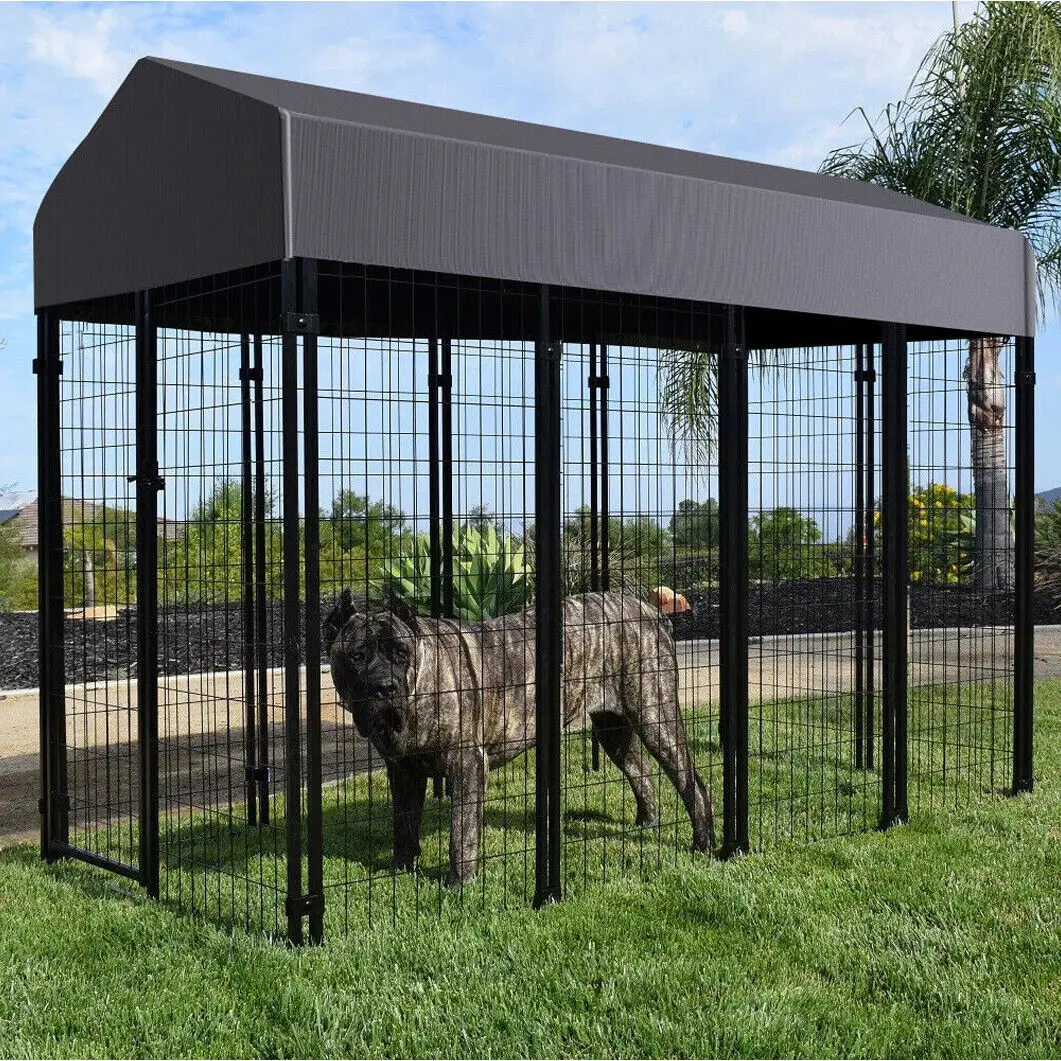
- Weather-resistant and built for outdoor use.
- Allows your dog fresh air while staying safe.
Step-by-Step Guide to Crate Training
Step 1: Introduce the Crate Positively
Start by making the crate a welcoming space for your dog. Place soft bedding inside and add a few toys. Let your dog explore it at their own pace without forcing them inside. Keep the door open and encourage them with treats.
Step 2: Use Treats and Meals to Build Positive Associations
Once your dog is comfortable with the crate, start feeding them meals inside. This helps them associate the crate with positive experiences. You can also toss treats inside to encourage voluntary entry.
Step 3: Gradually Increase Crate Time
Close the door for short periods while your dog is inside. Stay nearby at first and gradually increase the time they spend in the crate. Use a calm and reassuring tone to keep them comfortable.
Step 4: Use a Command for Crate Entry
Introduce a verbal cue like “crate” or “bed” when guiding your dog inside. Reward them when they comply, reinforcing the command.
Step 5: Leave for Short Periods
Once your dog can stay in the crate for a while without distress, start leaving the room for short durations. This step is crucial for teaching them that being alone in the crate is safe.
Step 6: Extend Crate Time Overnight
When your dog is comfortable, try leaving them in the crate overnight. Make sure they have gone potty before bedtime, and keep the crate in a familiar location.
Addressing Common Dog Crate Training Challenges
Whining or Barking in the Crate
Some dogs may initially whine or bark when placed in a crate. Avoid letting them out immediately, as this reinforces the behavior. Instead, wait until they are calm before opening the crate.
Crate Training an Adult or Rescue Dog
Older dogs may need more time to adjust to crate training, especially if they have never been crated before. Be patient and follow the same steps while ensuring the crate is large enough for comfort.
Separation Anxiety
If your dog struggles with being alone in the crate, start with shorter crate sessions and gradually increase the time. Try placing a familiar blanket or toy inside for comfort.
Best Dog Crate Sizes for Different Breeds
Choosing the right dog crate size ensures your pet is comfortable. Here’s a general guide:
- Small Dogs (Chihuahuas, Yorkies, Dachshunds): 24-inch crate
- Medium Dogs (Beagles, Cocker Spaniels, French Bulldogs): 30-inch crate
- Large Dogs (Golden Retrievers, Labradors, Boxers): 42-inch crate
- Extra Large Dogs (Great Danes, Mastiffs, St. Bernards): 48-inch or XXL dog crate
If your dog is a puppy, consider getting a crate with a divider to adjust the space as they grow.
Benefits of Crate Training for Travel
A dog travel crate is essential if you frequently take your pet on trips. Travel crates ensure safety during car rides and flights while providing a familiar space in new environments. Many extra large dog crates come with wheels and handles for easy transport.
Maintaining and Cleaning Your Dog Crate
To keep your dog’s crate hygienic and inviting:
- Use a removable tray for easy cleanup.
- Wash bedding regularly.
- Disinfect wire or heavy-duty dog crates to prevent odors.
- Keep outdoor dog crates sheltered to protect against the elements.
Final Thoughts
Crate training is a valuable tool for both pet owners and their dogs. Whether you need a large dog crate, an XXL dog crate, or stylish dog crate furniture, choosing the right crate and using effective training methods will create a positive experience for your furry friend. With patience and consistency, your dog will see their crate as a safe and comfortable retreat, making everyday routines easier and more enjoyable.
